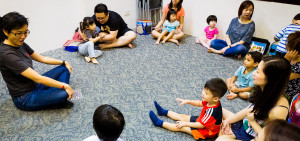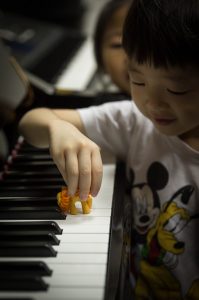How to handle children with short attention spans
Let’s talk about children who are taking a one-on-one piano lesson.
When the child enters the studio for his regular music lesson, probably the first thing that gets his attention is the huge instrument that takes up most of the space of the studio. For the first few minutes, the child is excited about this black monster of an instrument.
He sits on the piano bench, fingers pressing the piano keys. The lesson goes as planned.
Then, he starts to fidget. You notice his actions become volatile. His hands start to go from one end of the piano keys to the other.
“Ok Deepak, let’s try this,” you say it sweetly, even though in your mind, you can feel your heart beating faster and your body muscles stiffening.
Deepak listens and obeys your instructions… for another 3 minutes. He starts to slide down the piano bench to touch the golden-colored feet (aka the piano pedals) that protrude out of the black monster.
You bring him up to the bench and he slides down again. You swear the golden brass pedals are kiddy magnets.
“Come on Deepak. Sit on the bench and play this song”, the pitch of your voice raising a teeny-weeny bit.
Deepak starts to sulk and decides to commit the ultimate faux pas in a music lesson. He lies down flat on the carpeted floor and starts to roll around.

Sounds familiar?
Here are 4 scenarios and the tools I used from my Baby Music experiences to work with children who have short attention spans. The idea is to create a space of fun and laughter for the child to learn music effectively.
- I join in the fun
He starts to fidget and moves his hands from one end of the piano keys to the other.
Me: Wow! Your hands can reach that far? Can you play a tune at this end of the piano? It sounds like a bird tweeting, high in the sky!
If you want him to practice that tune again, ask him to play at the other end of the piano.
Me: Wanna become like an elephant making music?
That’s the cue to playing at the lower spectrum of the piano keys.
- Break it up into small Lego bit sizes
Since his attention span is short, choose an easy section of the tune, use a colour crayola to mark 1 or 2 bars into a box and ask him to play only the notes in the box.
- Slides down the piano bench?
Play a game of ‘sticky bum on the bench’. Put a soft toy on his lap that is able to lie flat without slipping off from his lap. Set a 30 second alarm.

Me: Let’s play a game. I’m gonna put Telly Turtle on your lap. You win when Telly is still on your lap when the alarm rings.
Once that is accomplished, build on that discipline with another game.
Me: That’s easy for you! Let’s see if Telly will stay on your lap while you are doing things. You win when Telly is still on your lap when the alarm rings.
Suggested things to do: touch the head, make a funny face, burst the balloon cheeks etc.
Now that he is in a space of relaxed mode and he is happy, add another challenge pertaining to the music he is supposed to play.
Me: Wow! What control you have over your body! Ha! Can you handle this next challenge? Let’s see if Telly will stay on your lap while you are:
- playing the notes in this section at the piano
- playing the entire tune at the piano
- Rolls on the floor
Focus on getting the child to sit on the bench. Play ‘The Amazing Bench Race’
Me: Let’s go over to this wall. When I say ‘go’, let’s see who sits on the bench first.
You win, of course. Then, play it again and let the child win.
Variations:
Me: You go over to this wall. When I say ‘go’, let’s see if you can get to this bench by the time I finish counting to ‘3’
If the room is too small for the race to take place, open the studio door and start the race outside the room!
Enjoy creating a space of fun, creativity, laughter and excitement for your children. Once that is done, you can add in the technical teaching stuff!
Feel free to add your comments below or email me where you have successfully created an environment suitable for the children with short attention spans to thrive! Love to read your sharing too!

